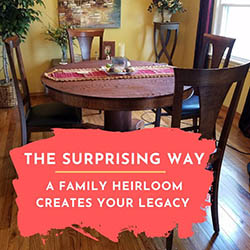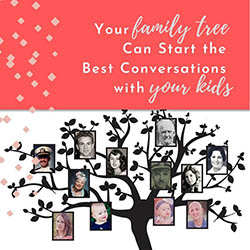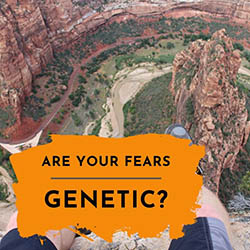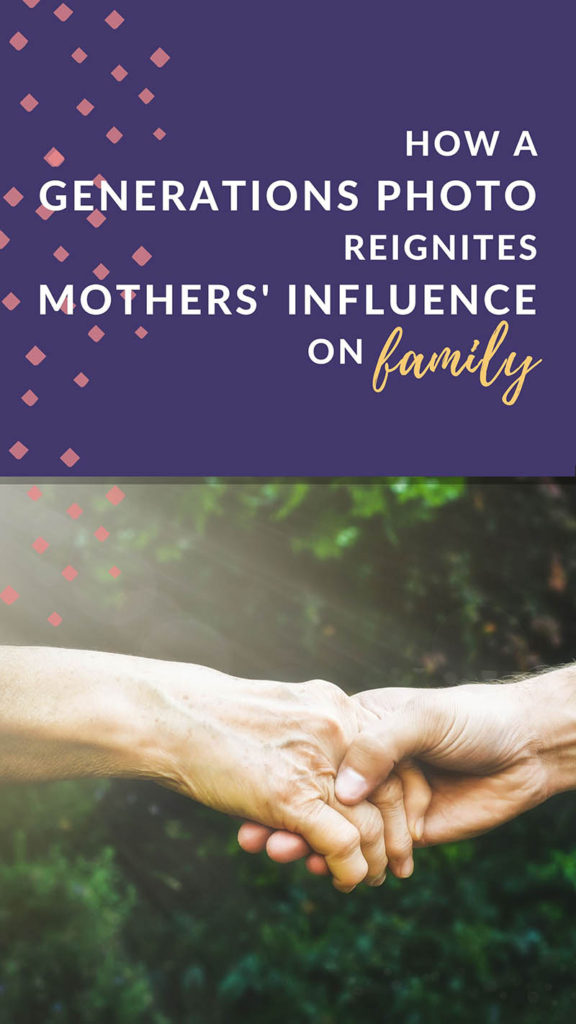
In December 2019, 4 generations of Laura Franklin’s family gathered for a wedding.
During the reception, 4 of the guests posed for this generations photo:
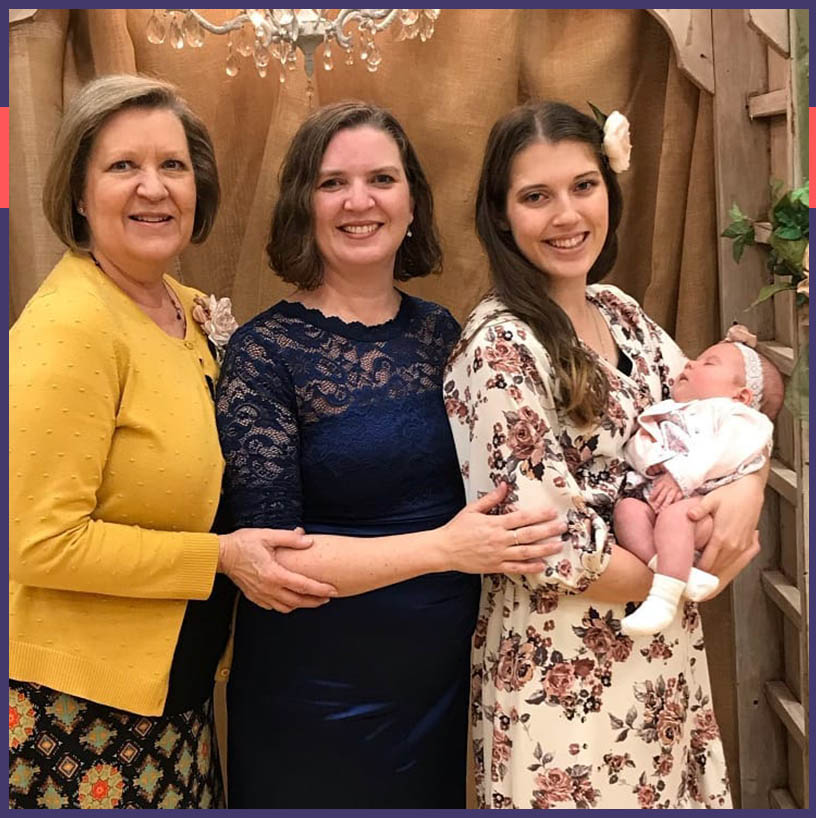
It’s 4 generations of mothers and daughters. Laura Franklin is the one in the blue dress. Laura’s mother is on the left side in yellow. Laura’s oldest child/daughter, Kimberly Parsons, is on the right, holding her own oldest child — a daughter.
A couple decades before this photo, a similar photo was taken:
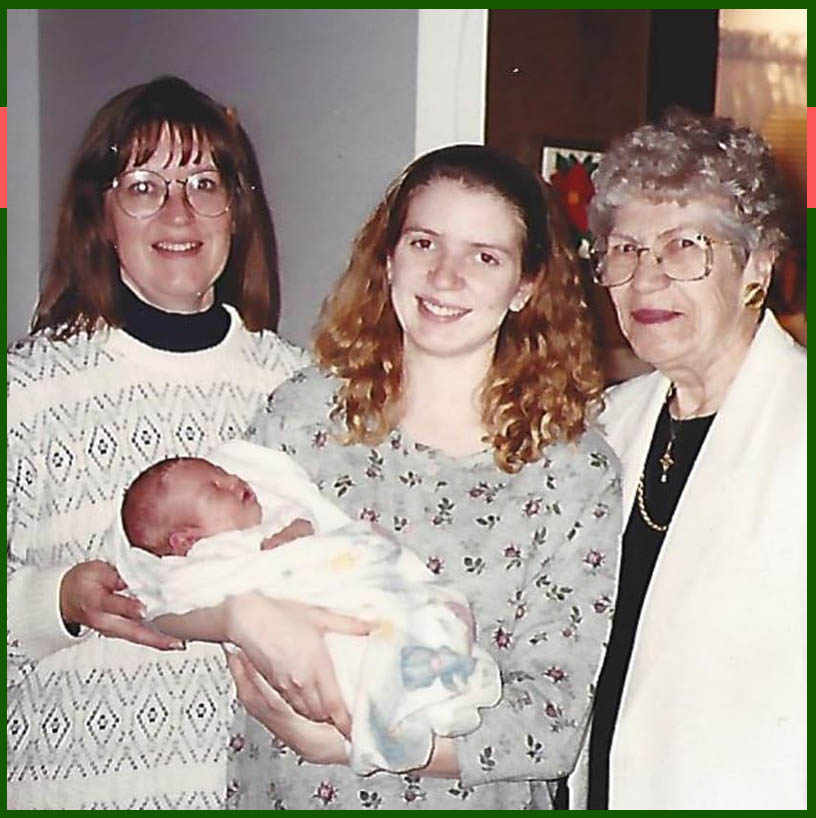
A younger Laura Franklin (again in the middle) had just walked in the front door (on Christmas Day!) from the hospital with her first baby, Kimberly. Her mom and grandma were there, and the family snapped this 4-generation photo. Laura’s mother is on the left, and Laura’s grandmother (Laura’s mother’s mother) is on the right.
And a couple decades earlier, this photo was taken at yet another wedding:
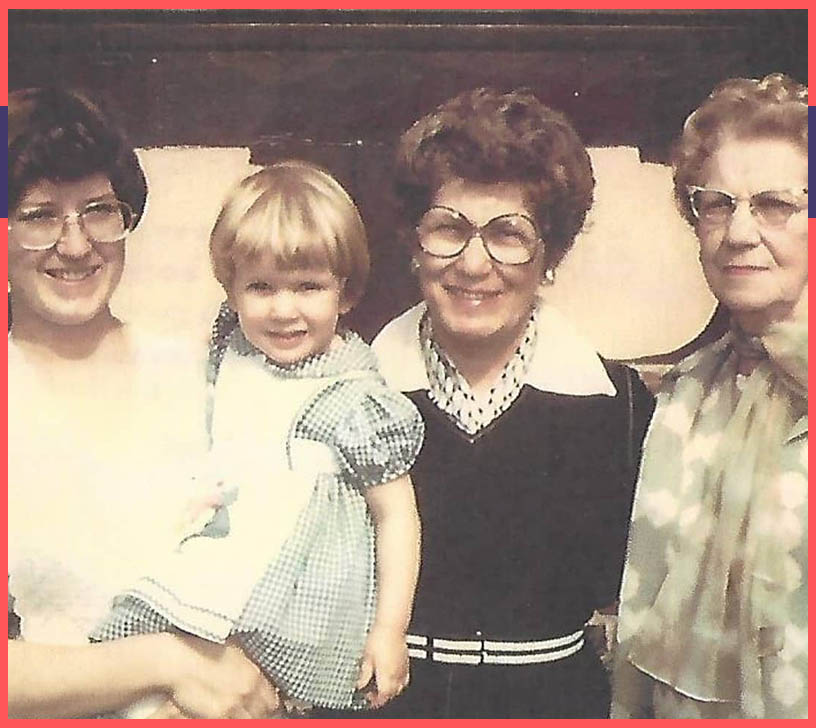
Laura Franklin is the little girl in this photo (although her last name wasn’t Franklin then). Laura’s mother is holding her, grandma is in the middle, and great-grandma is on the far right.
If you’keep track, these three photos trace 6 generations of women in one family — mother to daughter to daughter.
Generation photos are, of course, pretty popular. But what is it that makes generation photos so special, so meaningful. Especially photos showing generational chains of all women?
I talked with several women about generation photos, and I noticed several similar themes.
Strengthening connections to our people
Generation photos provide a more real sense of connection to the people in our family tree — both those we knew and those we never knew.
“I loved growing up with the photo of my mom, my grandma, my great-grandma, and me at my mom and dad’s wedding,” Laura Franklin said of the photo where she’s a little girl. “It represented two things to me — the wonderful, loving, and strong examples of the women in my life and the blessing it was that my mom was able to meet and marry my ‘second dad’ after my father died when I was two. It just meant that I had more wonderful family supporting me.”
My sister-in-law Robyn Sutherland echoed these thoughts:
“You feel sense of belonging when you can visually see how you’re connected to a bigger network of people. If you can actually see photos of your family connections, it can help to give you more purpose and realize there’s more to you than just you.”
Support of women
These generation photos document the shared experiences of women in a family.
“These women have experienced the same things I’ve experienced,” Robyn explained about her 4-generation photo. “We’ve all had babies, and that can be a traumatic experience. We’ve shared that. They’ve all experienced cooking for a family and cleaning up messes and worrying about their kids. So as I get older, those are the things I connect with them. We were alike, we had things in common.”
Kimberly Parsons and Laura Franklin had similar thoughts.
“For me, it’s been really special as a new mom being able to talk with my mom and grandma and hear their experiences as moms,” Kimberly said. “I’ve felt that I’ve connected with both of them on a totally different and deeper level than before as I’ve found things we’ve had in common as moms.”
“I loved having my grandma living down the street during those first few months of Kimberly’s life,” Laura recalled. “What a blessing to be able to reach out to multiple generations of women for help and support during those early days!”
In essence, the generation photos capture and memorialize these feelings, memories, and strengths of women’s connection to each other. And this seems true both when the women knew each other as well as when the women didn’t know each other.
Passing the legacy to their children
Generation pictures are also about passing on a legacy to children, grandchildren, and beyond.
“My granddaughter, Kimberly, and I are all first children and first daughters,” Laura said. “I love that we have that legacy of mothers and daughters together, and I can’t wait to someday take a picture with my granddaughter’s first baby!”
To have a series of 4 of those 4-generation pics — now that’s a pretty darn cool legacy.
For Kimberly, these photo represent passing along tangible memories.
“I have memories with my great-grandma Betty,” Kimberly said, referring to the oldest woman in the photo where Kimberly herself is a baby, “and it’s really special to me to know that my daughter will also have memories with her great-grandparents.”
Robyn Sutherland’s own daughter is only a preschooler, but Robyn intends to create a generation photo for her someday. (Because of deaths in the family, a 4-generation photo isn’t an option. More on that below.)
“When you’re growing up you have to find your own way,” Robyn told me. “A generation picture and knowing family stories can help you see the bigger picture in life. I hope the connection to family helps her make choices that will ultimately make her happy.”
Paige’s thoughts
After listing to these mothers, I wanted to find out what a generation photo might mean to a young adult who was in a generation photo as a baby.
And, as luck would have it, I had both a photo and a teenager.

The baby in in this photo is my niece, Paige Davis. She was about 1 month old in this pic. On the right is Paige’s mom and grandfather. On the left Paige’s great-grandmother (grandfather’s mother). And in the middle, “holding” baby Paige, is Paige’s great-great-grandmother, Mimi.
This photo is somewhat unique because it shows 5 generations in one place and time.
Mimi was almost 103 in this photo, and she passed away about a year after it was taken.
Paige is 18 now. I wanted to know what Paige would think of this photo. So I invited her over, hit record on my phone, and showed her the pic.
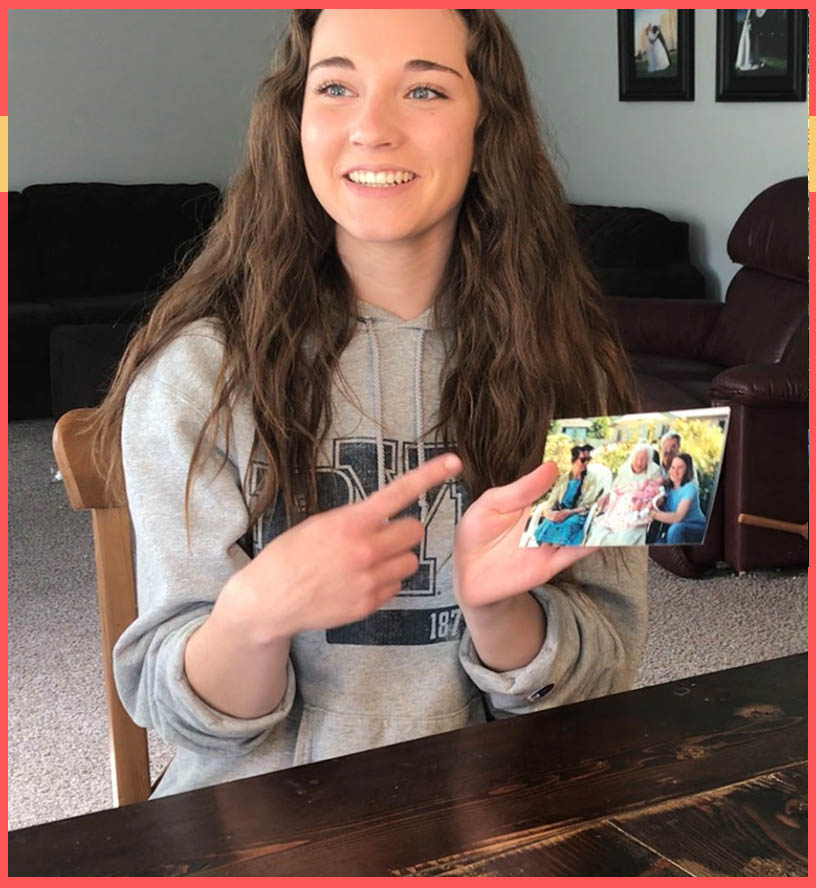
“Oh, this picture is in my baby book!” she said as she explained to me who the people in the picture were. “I do like this picture. I think it’s cool.”
Looking at the picture led us into a conversation about Mimi, who was born in 1899. She lived to see the 2000s, the only century that Paige has ever known.
“That’s insane that Mimi lived in every century for the past 3 centuries,” Paige said as we chatted. “I think it’s a crazy perspective that I was just a brand new baby in this picture and she was almost gone. It’s so cool that we were able to meet before she died.”
Paige and I chatted about Mimi’s life. Mimi lived through the entire 20th century. She was about 18 — the same age as Paige is right now — during the Spanish Flu epidemic. As I write this, we are in the midst of the 2020 COVID-19 pandemic.
“Wow!” said Paige, as we made the connection between these two women. “I wish I could have met her.”
And then Paige picked up the picture and said something wise beyond her years: “I think that a lot of people look at family history as just the tree. But this is an actual picture of it. This is family history.”
Oh, sweet niece, you’re making your aunt’s heart sing!
Yes! This is what family history is really about — making these connections!
The power of a generations photo collage
Right about now, you may be thinking, “It’s all great and good for you to have these pictures, but I can’t go back in time and take one. So many of my people have passed.”
Oh yeah, and I feel you. But, I have one more to show you.
This is a generation photo collage that shows Pagie’s 5 generations from above, but with each person around age 18.
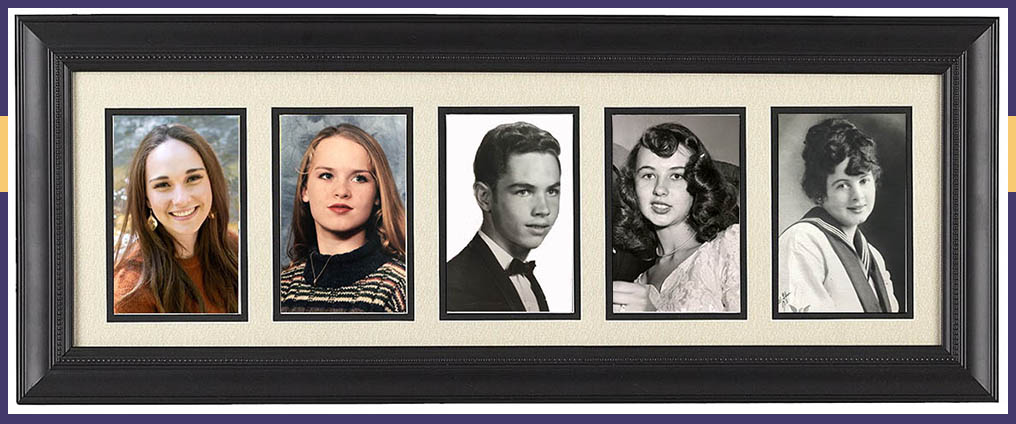
Obviously, the pictures weren’t taken at the same time or place. However, it still offers a similar emotion, reaction, and connection that a generations photo taken together does.
Robyn Sutherland (my sister-in-law) has a similar generations photo collage. It shows her, her mother, her grandmother, and her great-grandmother. A straight line of mother to daughter to daughter to daughter. (Sadly, we weren’t able to get a picture…yet.)
In Robyn’s family’s case, taking a 4-generation photo was never an option. Robyn’s great-grandmother died when Robyn’s grandmother was a teenager.
But a collage like this offers a similar feeling of connection that the “in-person” photos do.
“I love this picture,” Robyn told me of the photo collage. “It’s neat to see what these women looked like. To compare their faces. To look for what might have been passed from one generation to the next. The picture of my grandma is of a beautiful, young woman. I only knew her as an old woman.”
Create your own generation photo legacy
Browse through Pinterest, and you’ll find some elaborate and beautiful generation photos. In fact, I’ve created a Pinterset board with generation photo ideas to spark your own creativity. They range from artistic to funny to professionally posed.
But if I’ve taken one thing away from my conversations, it’s this:
A generation photo doesn’t have to be an elaborate, professional photo shoot to be meaningful.
Just a snapshot will do.
I first saw the three Franklin-family generation photos (from the beginning of this article) on Kimberly Parson’s Facebook page.
“It was really cool the response I got to sharing the photos,” she told me. “People seemed so touched and thought it was so special and cool to have the photos. It definitely made me appreciate them even more.”
If you take a second look at those photos, you’ll see that those pictures are nice snapshots. They’re not elaborate or staged or professional. They’re 3 separate moments in time that together create a beautiful experience.
So, if you’re feeling inspired to do something to honor the women in your tree — even something simple can generate remarkable things.
Do you have a generation photo in your family? I’d love to know in the comments below how it affects your family’s connections.

